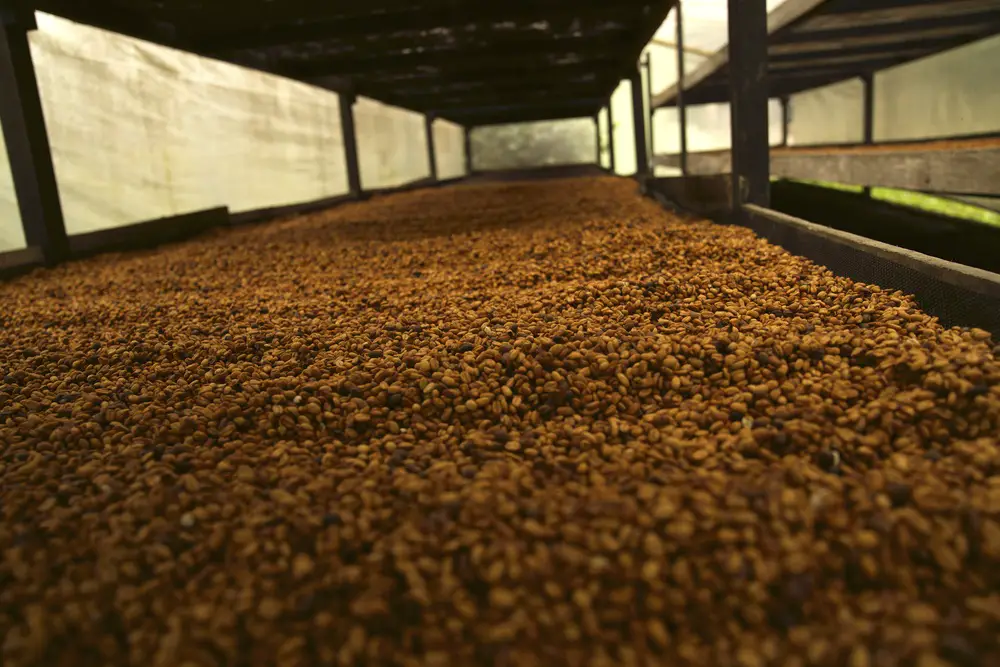A significant percentage of coffee is made from a blend of coffees, more commonly known as “blend coffee”.
Table of Contents
What is a coffee blend?
A coffee blend is a mixture of two or more coffee beans from different origins. The idea behind these blends is to combine the best qualities of coffees from different origins to create a coffee that is smoother and more balanced.
Many coffee blends are designed to work well both with and without milk. One of the most important uses is as a base for traditional coffee drinks such as espresso, latte and cappuccino.
As you can probably imagine, coffee blends come in many different shapes and forms. From commercial coffee blends found in coffee chains or coffee brands to “single origin” coffees, which can be considered to be a single type of coffee, the term “coffee blend” literally encompasses every coffee and its Origin.
How is the coffee blend made?
In order to create the perfect blend, coffee roasters must decide which individual types of coffee go well together and determine the proportion of each type.
Simple blends are made by blending two of the world’s most abundant coffee beans: Arabica and Robusta.
Arabica has a mild caramel flavor and Robusta has a strong flavor. Blend beans from each variety to achieve a unique balance between each coffee variety.
This is an easy way to add complexity and tweak the various roasting techniques.
A coffee blend is only complete when these three elements are perfected:
- The taste
- Aroma
- Body
A coffee blend is a way to create unique flavor combinations and flavor profiles. Common flavor profiles are chocolate, caramel, nuts, and honey. The resulting brew is often heavy and has a long-lasting, “robust” aftertaste.
One of the main advantages of coffee blends is that they are not as “overwhelming” as Single Origins.
Learn how to distinguish a quality coffee from an inferior coffee!
Coffee Blend Context: The pre-coffee blend
- With pre-mixing, all the green components (different types of coffee) are mixed and roasted in a single batch. This is a faster and cheaper way of roasting coffee and is often used by large commercial roasters because it eliminates the step of blending the beans after roasting.
- Coffees have been shown to respond differently to heat exposure depending on their density and moisture content, so some beans may be overdeveloped and others underdeveloped when roasted all together.
- That’s not to say that premixing never makes sense. The chemical and physical aspects of a particular mixture may in some cases lend itself to premixing and research and comment on the subject is ongoing.
After the pre – blend coffee: post-blend coffee
- In post-blending, each green component is individually roasted to its own “sweet spot” and then blended.
- Each origin is respected in its own identity and care is taken to express its best qualities.
- The benefit of post-mixing is that you have more control over the end product. All blends are post blended as it is believed that this achieves the cleanest and sweetest flavor profiles for the coffee blends and achieves the goal of unique and delicious flavor identities that all customers can trust.
Why is the coffee blend made?
Coffee blends are made for a variety of reasons.
- The combinations and proportions for a coffee blend are limitless, not to mention the amount of darkness and lightness the roaster wants to impart to the beans.
- It also creates the perfect flavor profile for a country’s coffee flavor profile, specific customer requests or individual brewing methods. The final blend conforms to the taste preferences of the end user.
- Although coffee is a product of everyday use, it is a seasonal product. Weather, seasonal changes and natural disasters are just a few of the various factors affecting harvest. Coffee blends allow the roaster to counteract such variables by changing the blend ratio or switching to other beans of consistent origin to create similar flavor profiles.
The popularity of coffee blends
Mixed coffee was until recently known as the “worse” variant of single-origin and specialty coffee. The reason for this is that consumers used to think that blends were made to “hide” the flaws of not so good crops of single origin beans.
But we should imagine that every roaster in the world has the same origin from a single place, like Kenya or Ethiopia. That would be boring. This is why most modern specialty coffee shops offer specialty or house blends because they want to offer their customers something unique.
Third wave emphasis on the farmer and the impact of digitalization on fourth wave coffee has changed consumer perceptions of coffee blends.
Coffee blend vs. origin coffee
Unlike a blended coffee, a single-origin coffee comes from only a single “origin.” The term “origin” is interpreted differently depending on the seller of the coffee.
Many coffee chains designate a coffee as single-origin when all the beans come from a single country.
These coffees are often highlighted and celebrated in the specialty coffee community for helping showcase the purist flavors of certain coffee beans.
In Colombia, for example, there are many microclimates within the country that yield at least 7 or 8 flavor profiles. This means that we could produce countless single-origin coffees that taste completely different from Colombia alone. When we refer to something as “single origin”, it means that all coffee beans come from traceable farms or cooperatives.
Conclusion
Defining a coffee blend may be simple, but making a good blend is an art. We are fortunate to live in a time when quality roasters are giving coffee blends the attention they deserve.



